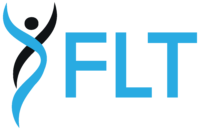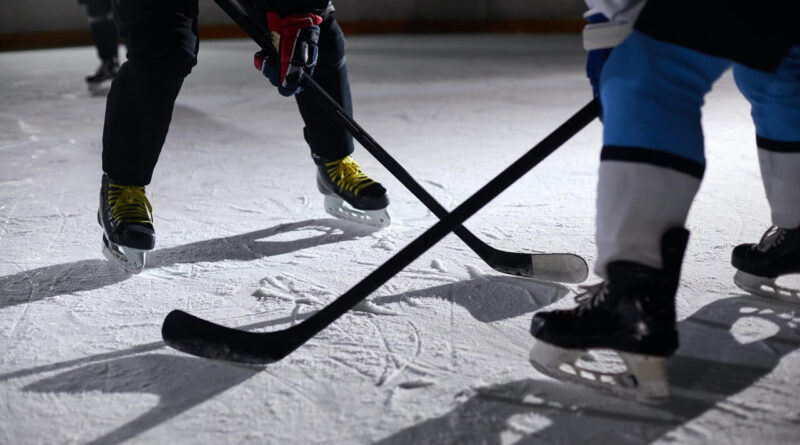Top 5 Hockey Fitness Fundamentals
Ice hockey demands physical and mental fitness, which is why professional hockey players have all the hallmarks of great athleticism – strength, speed, power, precision, and balance. These particular physical attributes were attained through dedication and hard work at the gym and on-ice.
So, before you go and copy your favorite hockey player’s workout regimen, we suggest you take a step back and dedicate some time to hockey fitness fundamentals. “Why?” you ask. Well, every fortress was built upon solid foundations, and your favorite hockey athlete still incorporates the top 5 hockey fitness fundamentals we’re about to discuss.
You’ll need physical fitness to dominate your league, so here are the top 5 hockey fitness fundamentals that will take you one step closer to elite-level physical performance.
Structural Balance
Hockey players spend as much time pushing off one foot as they do skating on two, making balance training crucial. If you think you don’t need balance training, remember that shakey balance rears its head when the stakes are highest, which will significantly impede your overall performance. If you can’t stop or change direction quickly, without falling, you need balance training. Otherwise, it’s just a matter of time before you’re injured.
Balance training will raise your spatial awareness and allow you to fine-tune your smooth, controlled movements to better coordinate in your surroundings. For example, a deliberate slow-walking knee hug will force you to balance on one leg at a time, strengthening your leg muscles and heightening your sense of balance. Follow that with some glute stretches for fundamental balance training.
Do Power Work, then strength
Ice hockey is all about power, or the athlete’s ability to exert maximum force in the shortest period of time, prompting you to focus primarily on power and then strength. To achieve this, incorporate power intervals with explosive movements into your strength workout regimen.
Just do a couple of power-conditioning circuits, before hitting the weights, like a six-minute cycle through five box jumps, five med ball side throws, and five standing ball slams. Next, you can throw in a couple of walking lunges, 25 step-ups, and 12 pushups per circuit. If you specifically want strength training for the day, reverse the process and finish your training session with a few power circuits.
Incorporate Aerobic Fitness
If proper nutrition’s your body’s fuel, then your heart and lungs are your body’s fuel injectors – the healthier and stronger they are, the more fuel they can deliver. So naturally, this increases your overall performance, and more importantly, improves other aspects of your training.
Despite popular belief and fitness trends, you can keep your lungs and heart fit without requiring an expensive gym membership and a personal trainer to chase you down an expensive treadmill. Instead, find a local football stadium with a set of stairs you can run at your own pace, or take up jogging or bicycling.
Wind sprints and explosive running are possibly the best two exercises to improve your aerobic fitness and strengthen the muscles of your legs, which brings us to the next point: speed.
Be Quick
Besides power, speed is also a fundamental attribute you’ll need to be successful at ice hockey. With a solid foundation built by aerobic fitness and strong leg muscles, you should be able to quickly accelerate, outputting a burst of fast skating when the game situation demands it.
The quickness in ice hockey is actually achieved through a combination of other fitness fundamentals. For example, wind sprints and explosive running will enable your muscles to output high bursts of power when necessary. Still, without proper balance, you won’t be able to implement your speed when skating. So, besides wind sprints and explosive running, we suggest the same training principle, but with inline skates.
This will help you develop the proper balance and strength in your legs necessary for outbursts of power, speed, and agility.
Avoiding, Preventing, and Healing Injuries
An ounce of prevention is worth a pound of cure, so it pays to take any precaution you can, including specific exercises and lifestyle choices.
If you’re new to ice hockey or the world of sports in general, please see a physician or a fitness trainer to get an assessment of your baseline fitness. This will help you and those in charge of your training set realistic fitness goals and workout regimens for off-ice training. As always, make sure you’re hydrated, rested, and following some sort of nutrition plan.
For on-ice training, make sure you follow the safety guidelines and keep your head up on the ice. Also, protective gear is your friend, regardless of whether you’re skating on ice, synthetic ice, slide boards, or other surface types.
Healing from minor injuries is often done through rest, thermal pads (heating or cooling), and doctor-prescribed medication. Spa centers and massages are a great way to rest, reset, and perhaps heal, depending on your injury, so head over there and have an RMT massage your critical spots.
Conclusion
Ice hockey fitness fundamentals like balance, power, speed, and recovery are just that – fundamentals. And by their definition, they are forming a necessary base upon which you can build your fitness progress and ascend to the top of your league through physical and mental fitness.

